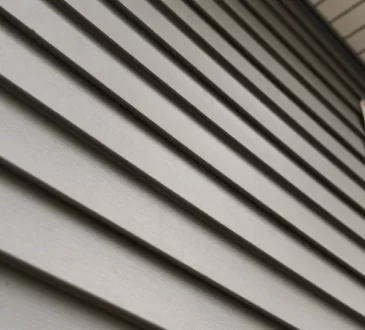Do you want to tackle a siding replacement project? We’re about to get into the world of siding tools and materials. This blog post has everything you need to get started, whether you’re an experienced DIYer or a newbie.
We’ll tell you what tools you need to use to make siding like a professional. We’ll also tell you about different siding materials and their advantages and disadvantages. You’ll be able to choose the right tools and materials for your next siding project.
Essential Tools You Need
Replacing the siding might seem difficult, but if you have the right tools, it can be a fun DIY project. Here’s what you need to do:
- Use a circular saw to cut siding panels to the right size. Use a blade that is made for the type of siding you’ve chosen.
- A drill will be useful for drilling holes to prevent splitting and for attaching siding to the wall.
- This powerhouse can be helpful for removing old siding or making intricate cuts.
- A framing or claw hammer is your best friend for driving nails and prying off old siding.
- Level: Making sure the siding is straight and even is important. A good level is important for looking professional.
- A classic tape measure is the best choice for accurate measurements.
- Utility Knife is a tool that can be used to score, cut, and trim different siding materials.
- Tin Snips: For cutting metal siding with precision.
Safety Precautions
Need a successful siding install? Before you start, think about safety first! Goggles, gloves, and a dust mask are important for keeping debris and dust out of your eyes. A safe project is a successful project.
The Right Siding for Your Home
Let’s look at the different types of siding materials and their pros and cons.
- Vinyl siding is a popular choice. Vinyl is known for its durability, low maintenance needs, and wide variety of colors. Vinyl siding installation might not be the best fire-resistant option.
- Fiber Cement Siding looks like wood but is easier to maintain than vinyl. It’s fire-resistant and durable, but it’ll cost more.
- Metal siding is strong and resistant to fire, especially in bad weather. Metal siding can be loud when it rains or hails, and it might cost more at first.
- Engineered Wood Siding is a beautiful and versatile option that looks like real wood but can handle more weather. Engineered wood requires more maintenance than vinyl, but less maintenance than traditional wood siding.
- Wood Siding is a classic choice that will always look good. Wood siding needs regular painting and staining, and it can get damaged by moisture.
Conclusion
Choosing the right siding is more than just about looking good. If you live in an area with extreme weather conditions, choose materials like metal or fiber cement. Think about how much time and effort you can devote to maintaining. Vinyl and metal siding don’t need much care, but wood siding needs regular attention.
Vinyl siding is usually the cheapest option, but metal and fiber cement can be more expensive. Think about the overall look you’re going for. Vinyl, engineered wood, and metal siding offer a variety of styles and looks.




